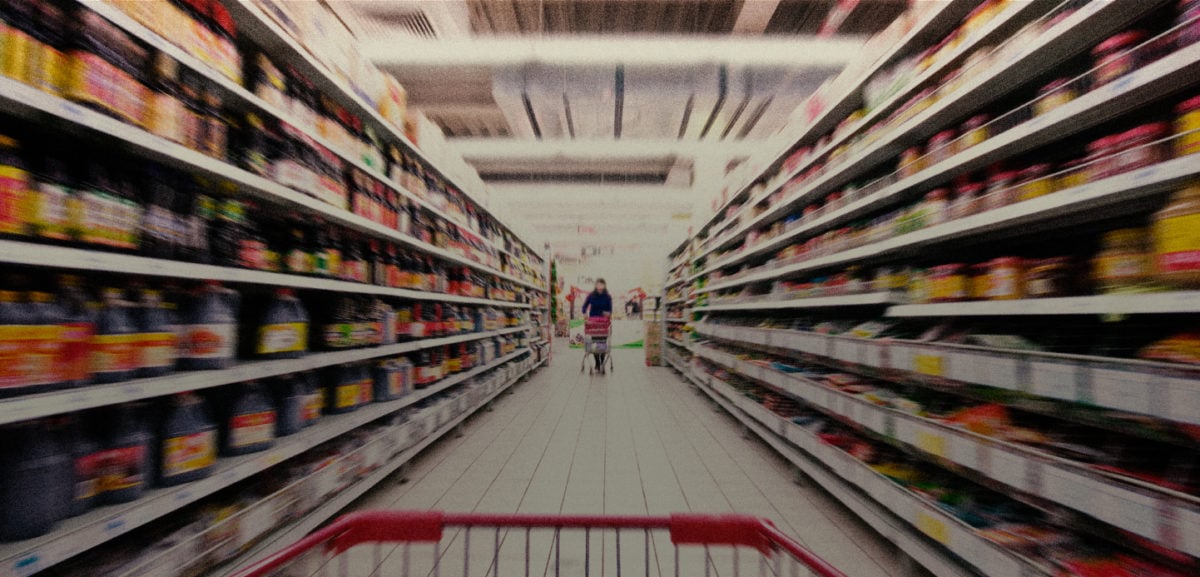Report on FDA Food Chemical Safety Initiatives and Alignment with Sustainable Development Goals (SDGs)
The U.S. Food and Drug Administration (FDA) is advancing a comprehensive food chemical safety program that directly supports several United Nations Sustainable Development Goals (SDGs). By ensuring the safety of the American food supply, the FDA’s initiatives make critical contributions to SDG 3 (Good Health and Well-being) and SDG 2 (Zero Hunger), which includes targets for safe and nutritious food. The program operates on a principle of shared responsibility, engaging the food industry to uphold its duty in marketing safe products, thereby promoting SDG 12 (Responsible Consumption and Production). This report outlines the FDA’s multi-faceted approach, encompassing pre-market controls, post-market surveillance, and strategic enhancements to its regulatory framework.
A key development is the FDA’s proposed method for prioritizing chemicals for post-market assessment. The public comment period for this method was extended to August 18, 2025, reflecting a commitment to transparency and stakeholder engagement, in line with SDG 16 (Peace, Justice and Strong Institutions) and SDG 17 (Partnerships for the Goals).
Pre-Market Controls for Responsible Production
The FDA’s pre-market activities are foundational to preventing unsafe chemicals from entering the food supply, ensuring that innovation in food production aligns with public health and environmental sustainability objectives.
Authorization of Food and Color Additives
- Manufacturers must secure pre-market authorization from the FDA, demonstrating that any proposed additive is safe for its intended use. This rigorous review process is a direct implementation of policies aimed at achieving SDG 3.
- Submissions must include an environmental assessment, ensuring that the use of an additive does not cause significant harm to ecosystems, thereby supporting SDG 14 (Life Below Water) and SDG 15 (Life on Land).
Oversight of Food Contact Substances (FCS)
- Companies must ensure that substances used in packaging, processing, and storage, which may migrate into food, are authorized and safe.
- The Food Contact Notification (FCN) process evaluates migration and toxicological data to ensure consumer exposure is safe, contributing to responsible manufacturing practices under SDG 12.
Generally Recognized as Safe (GRAS) Program
- The FDA manages a voluntary notification program for GRAS substances, which must meet the same safety standard as food additives.
- A public inventory of GRAS notices and FDA responses enhances transparency, reinforcing the principles of accountable institutions as outlined in SDG 16.
Post-Market Surveillance and Management
The FDA maintains continuous oversight of the food supply to address emerging scientific information and manage risks from chemical contaminants, working in partnership with domestic and international bodies.
Continuous Safety Evaluation and Monitoring
- The agency proactively reassesses authorized substances when new scientific data emerges, maintaining a public list of chemicals under review to ensure transparency.
- Initiatives like “Closer to Zero” focus on reducing exposure to contaminants for vulnerable populations, such as infants and children, directly addressing targets within SDG 3.
Contaminant Monitoring and Control
- Monitoring: The FDA monitors the food supply for environmental contaminants (e.g., heavy metals, PFAS) and process contaminants through programs like the Total Diet Study. This work is essential for protecting public health (SDG 3) and ensuring the integrity of food grown in our environment (SDG 6, SDG 12, SDG 15).
- Guidance and Action: The agency establishes action levels and provides guidance to industry on minimizing contaminants, enforcing compliance to protect the food supply.
- Research: The FDA invests in research to understand contaminant uptake (e.g., PFAS in plants) and develop methods to reduce exposure, fostering innovation for sustainable food production.
Enforcement and International Collaboration
- The FDA enforces pesticide tolerances set by the Environmental Protection Agency (EPA), ensuring agricultural practices do not compromise food safety.
- Collaboration with international bodies like the Codex Alimentarius Commission and the Joint FAO/WHO Expert Committee on Food Additives promotes global food safety standards, exemplifying SDG 17 (Partnerships for the Goals).
Strategic Enhancements for Sustainable Food Systems
The FDA is enhancing its approach to food chemical safety to keep pace with scientific innovation and strengthen its public health mission, further aligning its work with global sustainability targets.
Modernizing Assessment Tools and Methods
- Expanded Decision Tree: Development of a modernized scientific tool to classify chemicals based on toxic potential, improving the efficiency and scientific basis of safety reviews.
- New Approach Methods (NAMs): A commitment to adopting alternatives to animal testing, which promotes more ethical and efficient science in line with the principles of SDG 12.
- Integrated IT Systems: Expanding IT tools to create an integrated system for monitoring the food supply, enhancing the capacity of the institution as per SDG 16.
Systematizing Post-Market Review and Communication
- Systematic Framework: Establishing a transparent, systematic framework for prioritizing post-market safety reviews of chemicals, with public meetings and comment periods to foster stakeholder collaboration (SDG 17).
- Cumulative Exposure Assessment: Refining procedures to assess cumulative exposure to multiple chemicals, providing a more holistic view of potential health risks (SDG 3).
Strengthening Surveillance and Compliance
- The FDA is enhancing surveillance of the food supply and its compliance activities to ensure industry meets its responsibilities.
- The agency is updating administrative processes through rulemaking, such as the final rule concerning Food Contact Notifications, to respond more effectively to new safety information and ensure a safe, wholesome, and sustainable food supply for all.
Analysis of Sustainable Development Goals (SDGs) in the Article
1. Which SDGs are addressed or connected to the issues highlighted in the article?
-
SDG 3: Good Health and Well-being
- The article is fundamentally about protecting public health. It states the FDA’s mission is to “protect consumers from harmful exposure to chemicals that are in foods” and to “keep the American food supply safe and healthy.” This directly aligns with ensuring healthy lives and promoting well-being.
- Specific initiatives like “Closer to Zero: Reducing Childhood Exposure to Contaminants from Foods” highlight a focus on vulnerable populations, a key aspect of public health and SDG 3.
-
SDG 12: Responsible Consumption and Production
- The article details the management of chemicals in the food supply chain. This relates to ensuring sustainable consumption and production patterns.
- It explicitly mentions the need for an “environmental assessment” for new food additives to ensure their use “does not have a significant impact on the environment.” This connects to the environmentally sound management of chemicals.
- The FDA’s work with the food industry to “minimize or prevent hazards from contaminants” and implement “preventive controls” reflects the goal of reducing waste and pollution throughout the production cycle.
-
SDG 2: Zero Hunger
- While not the primary focus, the article’s efforts contribute to food security. It mentions that chemicals are used to extend shelf life and protect “food from pathogens that can make people sick.”
- By ensuring the food supply is safe from chemical hazards, the FDA’s work supports Target 2.1, which calls for access to “safe, nutritious and sufficient food.” An unsafe food supply undermines food security.
-
SDG 17: Partnerships for the Goals
- The article repeatedly emphasizes collaboration. It mentions partnerships with “other U.S. and international regulatory agencies,” including the USDA and EPA.
- It details international cooperation with organizations like the “Codex Alimentarius Commission and the Joint FAO/WHO Expert Committee on Food Additives” to develop international food safety standards.
- The FDA also engages with the private sector (“food industry”), the public (through comment periods), and other stakeholders, reflecting the multi-stakeholder approach central to SDG 17.
2. What specific targets under those SDGs can be identified based on the article’s content?
-
Target 3.9: Substantially reduce the number of deaths and illnesses from hazardous chemicals and air, water and soil pollution and contamination.
- The entire article is dedicated to this target. The FDA’s role is to “protect consumers from harmful exposure to chemicals” and prevent “unsafe exposure from chemical contaminants that can enter the food supply through the growing and processing environment.”
- The agency’s post-market activities, such as monitoring the food supply and taking action “when we find that the level of a contaminant causes a food to be unsafe,” directly contribute to reducing illnesses from chemical contamination.
-
Target 12.4: Achieve the environmentally sound management of chemicals and all wastes throughout their life cycle… and significantly reduce their release to air, water and soil in order to minimize their adverse impacts on human health and the environment.
- The FDA’s pre-market review process, which requires an “environmental assessment” for new food additives, directly addresses the management of chemicals to prevent environmental harm.
- The monitoring of “environmental contaminants” that are “in the soil, water or air where foods are grown” and research into how substances like PFAS are taken up by plants demonstrate a commitment to managing the entire life cycle of chemicals and their impact on the food supply and environment.
-
Target 2.1: End hunger and ensure access by all people… to safe, nutritious and sufficient food all year round.
- The article supports the “safe food” component of this target. The FDA’s mission to “safeguard the food supply” and ensure that “chemicals used in food… must be safe” is a prerequisite for achieving food security.
- The regulation of chemicals used for preservation, which “extend shelf life,” also contributes to maintaining a stable and safe food supply.
-
Target 17.17: Encourage and promote effective public, public-private and civil society partnerships.
- The article provides concrete examples of such partnerships. It mentions the FDA “partnering with the USDA to collaborate with growers,” working with the “food industry” on safety responsibilities, and collaborating with “international organizations such as the Codex Alimentarius Commission.”
- The process of holding public meetings and opening dockets for public comment (e.g., docket FDA-2025-N-1733) is a form of partnership with civil society and the public to enhance regulatory processes.
3. Are there any indicators mentioned or implied in the article that can be used to measure progress towards the identified targets?
-
Indicators for Health and Safety (Target 3.9)
- Levels of Contaminants in the Food Supply: The article mentions monitoring programs like the “FDA’s Total Diet Study” and the “Closer to Zero initiative” which focuses on reducing levels of “lead, cadmium, arsenic, and mercury.” The data from these monitoring activities serve as a direct indicator.
- Number of Regulatory Actions: Progress can be measured by the number of actions taken to protect public health, such as “revoking authorizations,” “voluntary market phase-out agreements and recalls,” and issuing “alerts.”
- Establishment of Safety Levels: The creation and updating of “tolerances, action levels, and guidance levels for some contaminants in food,” made available through tools like the “Chemical Contaminants Transparency Tool,” is a measurable output.
-
Indicators for Environmental Management (Target 12.4)
- Number of Environmental Assessments Reviewed: The pre-market requirement for an “environmental assessment” for food additives implies that the number of these assessments conducted and reviewed is a key performance indicator.
- Development of New Methods: Progress is indicated by the development and adoption of “New Approach Methods (NAMs) such as alternatives to animal toxicology testing” and modern analytical tools to better assess chemical safety and environmental impact.
-
Indicators for Partnerships (Target 17.17)
- Number of Collaborative Agreements and Activities: The article implies this through its mention of specific partnerships with the USDA, EPA, Codex, and the Joint FAO/WHO Expert Committee. The number of joint projects, standards developed, and meetings held are indicators of this collaboration.
- Stakeholder Engagement Activities: The number of public meetings held, dockets opened for public comment, and the volume of feedback received are direct measures of public and stakeholder engagement.
4. Table of SDGs, Targets, and Indicators
| SDGs | Targets | Indicators (as identified in the article) |
|---|---|---|
| SDG 3: Good Health and Well-being | 3.9: Substantially reduce deaths and illnesses from hazardous chemicals and contamination. |
|
| SDG 12: Responsible Consumption and Production | 12.4: Achieve the environmentally sound management of chemicals and all wastes throughout their life cycle. |
|
| SDG 2: Zero Hunger | 2.1: Ensure access for all people to safe, nutritious, and sufficient food. |
|
| SDG 17: Partnerships for the Goals | 17.17: Encourage and promote effective public, public-private, and civil society partnerships. |
|
Source: fda.gov







